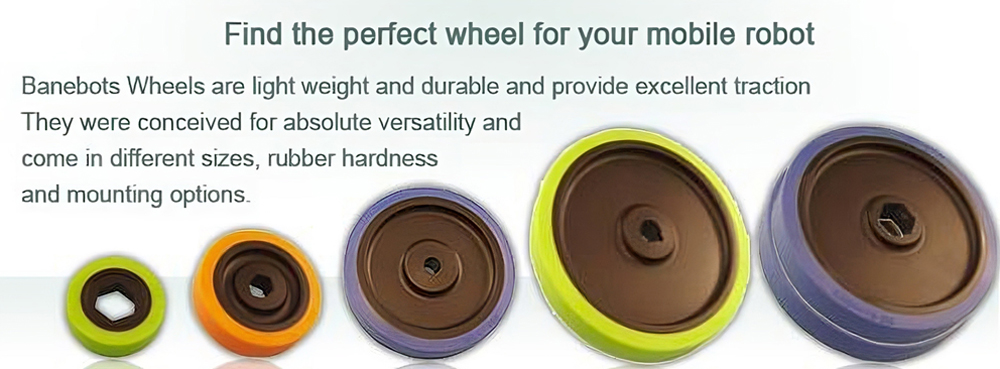Are you looking to make a wheeled robot and not sure what size wheel you need? Here we provide an insight into some of the equations which affect your robot's speed and distance traveled.

The velocity (feet per second) of a robot is directly related to the angular velocity, w (in radians per second - NOT RPM) of the motor and the radius of the wheel, R (ideally in meters or feet, so when calculating v it is in meters per second or feet per second).
w = v / R
Re-arranging this equation, we find the velocity of the robot:
v = w*R
Most motor manufacturers provide the no load RPM, so to convert RPM to radians per second, you need the following equation:
1 rev/min = 2*pi/60 rad/sec
Often, a "Voltage constant", Kv is provided by the manufacturer; for example, a motor may be rated at Kv= 2.4 Volts / 1000 RPM which correlates the RPM to the voltage.
This is the theory, now the reality: It's not always possible to operate a motor at its nominal voltage, and we often need to operate it at a few volts higher or lower. Keep in mind that the "nominal" voltage runs the motor at near peak efficiency, which is still never 100%; and as you move away from the nominal voltage, the efficiency drops, so the motor needs more current to provide the same torque, consuming the battery even faster. Next, keep in mind that not all motors can be operated at all voltages and all motors have a maximum rated voltage. The Voltage constant usually applies over a small range around the nominal voltage, and outside this range, the curve is not linear and not only will the motor not be operating efficiently, the output will not be anything like what you predict with the equations.
To get an idea of how far your robot has traveled, you need to know the circumference of the drive wheel:
Circumference (C) = 2*pi*R
Distance traveled = w*C*t (where 'w' is in rad/sec and 't' is in seconds) So what to do? Here are some useful tips:
- Choose smaller sized wheel for flat terrain, larger wheel for more "off-road" (or large obstacles)
- Proportional to the size of the robot (choosing a wheel proportional to the size of the robot will usually mean the motor you will need is also proportional, and the robot has a better chance of moving at a decent speed)
- See what wheels are out there - not all wheels have mounting hubs designed for all motors
- Keep in mind that a larger wheel may require a more powerful motor; we'll go into more detail about this in a future article.
- Use the same wheel for all drive motors: as you can see, changing the radius affects both the speed and the distance traveled: you don't want one wheel "fighting" against the other.



